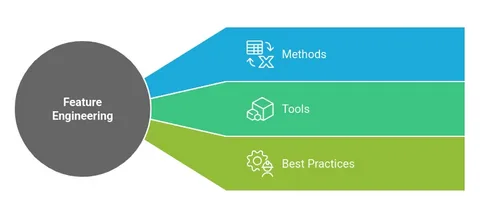In the vast ocean of data, time series stand apart. They hum with an underlying pulse, a cyclical beat that often holds the key to accurate predictions and profound insights. Yet, raw time series data, in its linear progression, rarely reveals these rhythms explicitly to a machine learning model. This is where Feature Engineering for Periodicity becomes indispensable—the art and science of transforming temporal information into discrete, meaningful features that capture seasonal and cyclical patterns.
Imagine data science not as mere computation, but as symphony conducting. A data scientist, in this metaphor, doesn’t just play notes; they arrange them, interpret their emotional weight, and bring out the latent harmonies and rhythms. When dealing with time series, they are tasked with finding the underlying tempo, the recurring motifs, and the overarching movements. Feature engineering for periodicity is the conductor’s detailed score, explicitly notating the seasonal crescendos, the daily repeats, and the weekly variations, ensuring the orchestra (our machine learning model) performs the piece with perfect timing and understanding.
1. The Calendar’s Whisper: Extracting Time-Based Features
The simplest, yet profoundly effective, periodic features come directly from the calendar. A timestamp like “2023-10-26 14:35:00” holds a wealth of cyclical information. We can extract:
- Year, Month, Day of Month, Day of Week, Day of Year: These immediately capture annual, monthly, and weekly cycles.
- Hour, Minute, Second: Essential for daily or sub-daily patterns.
- Is_Weekend, Is_Holiday: Binary flags that capture distinct behavior on specific days.
- Week of Year, Quarter of Year: Useful for broader, slower-changing periodicities.
For instance, sales data might spike on weekends and certain holidays, while energy consumption follows a distinct daily pattern of peaks and troughs. By converting a single timestamp into half a dozen distinct features, we explicitly tell the model, “Hey, pay attention! This isn’t just a continuous flow; there are specific periods with different characteristics.” Many foundational data science classes in Bangalore introduce these basic yet powerful transformations.
2. The Embrace of Sine and Cosine: Capturing Continuous Cyclicality
While discrete features like DayOfWeek are helpful, they treat each day as an independent category. What if the pattern is smoother, truly cyclical, where Monday is “close” to Sunday and Tuesday? For such continuous cycles, especially for hours of the day or months of the year, sine and cosine transformations are elegant solutions.
By converting a cyclical variable X (e.g., hour of day from 0-23, or month from 1-12) into sin(2 * pi * X / period) and cos(2 * pi * X / period), we create two new features. These features represent the position on a circle, ensuring that the beginning and end of a cycle (e.g., midnight and 23:59 for hours) are numerically close, reflecting their true cyclical relationship. This technique is particularly powerful for capturing smooth transitions in demand, temperature, or traffic flow.
3. Case Study: Predicting E-commerce Sales Surges
An online fashion retailer aimed to optimize inventory and staffing by accurately predicting daily sales volumes.
The Challenge: Sales showed clear weekly and annual patterns, but standard linear models struggled to capture these nuances, especially during seasonal peaks like Black Friday or Valentine’s Day.
Solution: The data science team engineered a comprehensive set of periodic features:
- DayOfWeek, Month, DayOfYear
- Binary flags for Is_Weekend and Is_Holiday (including specific popular shopping holidays).
- Sine and cosine transformations for HourOfDay and DayOfYear to capture continuous daily and yearly trends.
Impact: These features significantly improved the model’s ability to anticipate demand. Forecast accuracy increased by 18%, leading to a 10% reduction in overstocking and improved customer satisfaction due to better product availability during peak periods. This practical application of feature engineering is often a highlight in advanced data science classes in Bangalore.
4. Case Study: Optimizing Energy Consumption in Smart Grids
A smart grid operator needed to predict electricity demand hour-by-hour to efficiently manage power generation and distribution.
The Challenge: Electricity consumption varies dramatically by time of day (e.g., morning and evening peaks) and season (e.g., higher demand for heating/cooling).
Solution: Engineers leveraged:
- HourOfDay and DayOfWeek features for immediate daily and weekly patterns.
- Sine and cosine transformations for HourOfDay and DayOfYear to smoothly represent cyclical changes throughout the day and year.
- Interaction features, like HourOfDay * Is_Weekend, to capture how daily patterns change on non-working days.
Impact: The enhanced model provided highly accurate short-term load forecasts. This allowed the operator to reduce reliance on expensive peak-time generation units, saving millions in operational costs and contributing to grid stability.
5. Case Study: Enhancing Public Transportation Ridership Forecasts
A city’s public transit authority wanted to improve its bus scheduling by more accurately forecasting daily ridership for each route.
The Challenge: Ridership exhibited strong daily commute patterns, reduced usage on weekends, and distinct variations during school holidays or public events.
Solution: The data scientists extracted:
- Hour, DayOfWeek, Month, and Is_Weekend features.
- Binary flags for Is_SchoolHoliday and Is_PublicEvent (based on an external calendar).
- A “time since last major event” feature, capturing the decay of event-driven ridership surges.
Impact: The refined forecasts allowed the transit authority to adjust bus frequencies dynamically, reducing wait times during peak hours and reallocating resources more efficiently during off-peak periods, leading to higher passenger satisfaction and operational cost savings. Pursuing data science classes in Bangalore can equip professionals with these essential predictive modeling skills.
Conclusion: The Art of Seeing Patterns in Time
Feature engineering for periodicity is not just a technical step; it’s an act of revealing the inherent order and recurring beauty within time series data. By explicitly crafting features that echo the rhythms of days, weeks, and seasons, we empower machine learning models to move beyond simple trend-following. We enable them to truly understand and anticipate the ebb and flow of phenomena—from customer behavior and energy demand to disease spread and financial markets. In an increasingly dynamic world, the ability to discern and harness these temporal patterns is paramount for building intelligent, predictive systems that can navigate the complexities of time itself.


